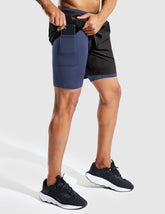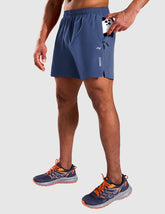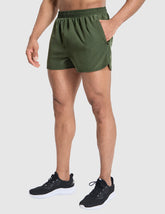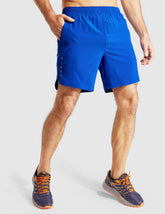How to Choose a Tent for Camping

For many of us camping with our friends and families is a great summer pastime. Be on the campground or only in the nearby for activities, this article offers you good advice to choose a camping tent - your home away from home.
Tent sleeping capacity
When choosing the tent, first choose a model based on your group size and whether you might need additional space for extra friends, gear or dogs. Keep in mind that, however, no industry standard exists that defines per-person tent dimensions.
When evaluating tent capacity ratings, our general advice is this: Assume a close fit. But more capacity of tents will have to take into consideration if is to need more room, especially if you or your camping companion(s):
- are large people
- are claustrophobic
- toss and turn at night
- sleep better with more than average elbow room
- are bringing a small child or a dog
Tents Seasonality
3-season tents
By far the most popular tent is 3-season tents, a lightweight shelter designed for the relatively temperate conditions of spring, summer, and autumn. They usually are equipped with ample mesh panels to increase airflow. Mesh panels keep bugs out (but can still let in powdery blowing sand). Properly pitched with a taut rainfly, 3-season tents can withstand the pouring rain but are not the best choice for sustained exposure to a rainstorm, wild wind, and heavy snow.
The main features:
- keep dry in rain or light snow.
- shield you from bugs.
- provide privacy.
3-4 seasons tents
Extended-season (3+ season) tents are engineered for prolonged 3-season usage, suitable for summer use but also trips in early spring and late fall when moderate snow may be encountered. ventilation, strength, and warmth retention.
Usually, compared to 3 season tents, they include 1 or 2 more poles and fewer mesh panels, making them sturdier and warmer. For those who always consider the high peak as the destination, 3-4 seasons tent is a great choice. Sturdy as they are, it is still can’t as fully fortified for harsh winter weather as 4-seasons tents.
4 season tents
Aims to resist wild wind and heavy snow, 4 seasons comping tent can be used in any season. But the chief function of them is to stand firm in the face of seriously inhospitable weather, principally in winter or above treeline.
They use more poles and heavier fabrics than 3-season tents. Their rounded dome designs eliminate flat roof spaces where snow can collect. They offer few mesh panels and rainfly that extend close to the ground. This hinders ventilation and can make them feel warm and stuffy in mild weather. But, a 4-season tent will provide a shelter making you feeling assurance when foul winds begin to howl.
Key tent features
Peak height
Peak height or tent height is usually measured from the ground up to the top of the tent's exterior. Looking for a tent with a tall peak height if you like being able to stand up when changing clothes or enjoy the airiness of a high ceiling. To calculate the interior height, subtract 2 or 3 inches from the stated " peak height " 3 ft. 6 in. is usually enough to sit up in.
- Cabin-style tents feature near-vertical walls to maximize overall peak height and livable space, (and some models come with family-pleasing features such as room dividers and an awning, or a vestibule door that can be staked out as such).
- Dome-style tents offer superior strength and wind-shedding abilities, both of which you'll appreciate on a stormy night. They stand tall in the center, but their walls have more of a slope which slightly reduces livable space.
Tent Floor Size
The floor area (measured in square feet) tells you the size of the camping tent. If you are tall (over 6 feet) or need more room, please consider a tent with a floor-length of 90 inches (rather than the typical 84-88 inches). If you need extra elbow room that includes space to store gear inside, choose a camping tent that has a floor area of at least 20 square feet (give or take) per person. For those looking to shave ounces (backpackers, bike campers) a camping tent that offers about 15 square feet per sleeper will work nicely, though it will be a tight fit.
Tent Doors
When choosing a tent, please take the numbers and the shape or orientation of doors into your consideration. multiple doors help you avoid climbing over each other for midnight bathroom breaks if you are comping with your families. Also, note how easy or noisy the doors are to zip open and shut. YKK zippers on the doors resist snagging and breaking better than others.
Tent Poles
A tent's pole structure helps determines how easy or hard it is to pitch. Virtually all family tents these days are freestanding. This means they do not require stakes to set up. The big advantage of this is that you can pick the tent up and move it to a different location before staking. You can also easily shake the dirt out of it before taking it down.
Fewer poles allow faster setups. It's also easier to attach poles to clips than it is to thread them through long pole sleeves. Many tents use both clips and short pole sleeves to balance strength, ventilation and setup ease. Color-coded corners and pole clips also make setup faster. Aluminum poles are stronger and more durable than fiberglass.
Rainfly
A rainfly is a separate waterproof cover designed to fit over the roof of your tent. Use it whenever rain or dew is expected, or any time you want to retain a little extra warmth. There are two types of rainfly, one Roof-only rainflies allowing more light, good view while shielding you from little rain, one Full-coverage rainfly offering maximum protection from wind and rain.
Tent Materials
When you're shopping, be aware that higher-denier fabric canopies and rainfly are more rugged than lower-denier ones. Also, seam tape and high-denier fabrics on tent floors reduce the odds of leakage.
Vestibules / Garage
Shelters or awnings attach to your tent to store or shelter your muddy or dusty boots or keeping your packs out of the rain. They can be an integral part of the rainfly or add-on items that are sold separately.
Ventilation
Mesh panels often using in the ceiling, doors, and windows of the tent, increasing cross-ventilation to help manage condensation. Please look for larger mesh panels for a hot and humid climate.
Interior Loops and Pockets
A lantern loop is often placed at the top-center of a tent's ceiling for hanging a lantern. Loops on interior tent walls can be used to attach a mesh shelf (called a gear loft, sold separately) to keep small items off the tent floor. Similarly, interior pockets help keep your tent organized.
Footprints
Always bring along a sheet of plastic or nylon to place under the tent. This will save the floor from extra wear and tear. Floorguards (also called FOOTPRINTS) are available and specifically sized for most models.
Other Nice-to-Have Accessories
Stakes and anchors for varying site conditions
- Broom and dustpan
- Inside/outside floor mat
- Tent repair kit
- Seam sealer
- Utility cord
- Battery-powered ventilation fan



